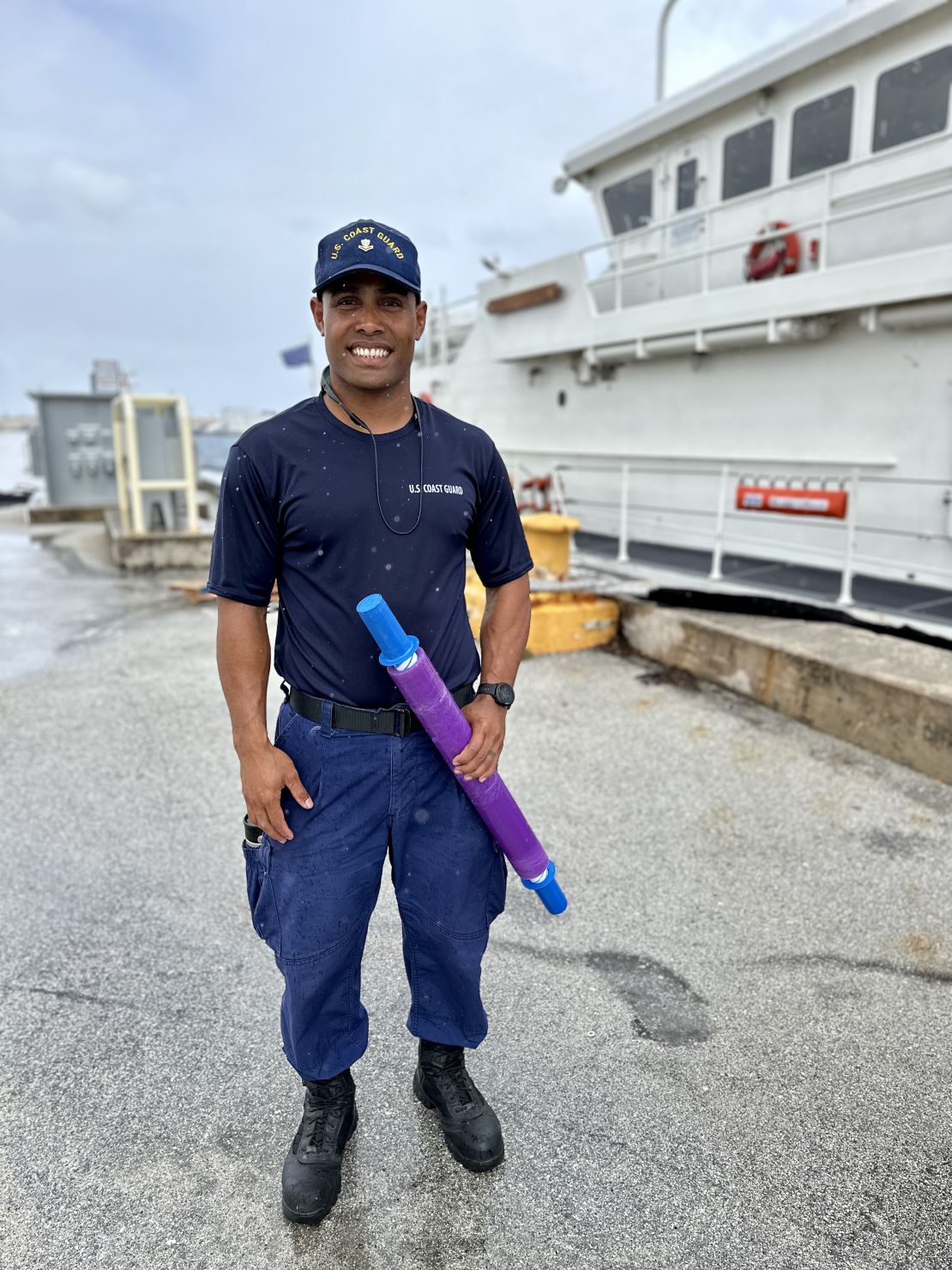CNN
—
A U.S. Navy and Coast Guard operation on Tuesday rescued three sailors stranded on a small Pacific Ocean island for more than a week after the trio used palm fronds strewn on a white sand beach to chant “help.”
The mission unexpectedly turned into a family reunion.
According to U.S. Coast Guard officials, the three men were planning to go fishing in the waters around Byklot Atoll, part of Micronesia, on March 31 when their 20-foot open skiff got caught in a swell and damaged its outboard motor.
They raced ashore in an uninhabited bikelot, but their radio ran out of battery power before they could call for help.
So they gathered palm fronds from the 31-acre island, prepared to shout “HELP” on the beach and waited, according to a Coast Guard statement.
The names of the stranded men have not been released by the Coast Guard, and CNN's attempts to contact their relatives have not received responses.
For a week, the men lived on coconut meat, but they had fresh water from a small well on the island, which is sometimes visited by fishermen in the area, Coast Guard officials said.
A search for the men began on April 6, when one of their relatives called rescue officials in the US Pacific territory of Guam and said they had not returned to Polowat Atoll, 100 miles away, where the trio had started their journey. Easter Sunday.
It's hard to overstate how remote Piklelot is. The island is part of the Federated States of Micronesia, a Pacific nation between the Philippines and Hawaii, made up of more than 600 islands scattered over an ocean of about 2.5 million square kilometers.
A U.S. Navy P-8A reconnaissance aircraft dispatched from Kadena Air Base in Okinawa, Japan spotted a palm frond “HELP” sign on the beach on April 7, the Coast Guard said.
Search and rescue coordinator Lt. Chelsea Garcia said on the day the trio was found that the identification was “critical” to finding them in a search area of more than 103,000 square miles.
“This smart move was critical in directing rescue efforts directly to their location,” Garcia said in a statement.
A Navy jet dropped survival kits on the three men and relayed their location to a rescue center.
A day later, a Coast Guard HC-130 flying out of Air Station Barbers Point, Hawaii, gave the men a radio.
When the Coast Guard cutter Oliver Henry reached Bigelot on April 9, the story took another turn.
One of the first to be rescued ashore was Petty Officer 2nd Class Eugene Halishlius. The stranded people were surprised to find that Halishlius was Micronesian and spoke the local language.

“I could see in their faces, 'Whoa! Who's pulling up this guy who can speak our language?'” Halishlius told CNN in an interview with Oliver Henry, who was at sea after dropping off the men at Polovat on Thursday.
When he gives his name to the first of the stranded to reach the rescue boat, Castware is stunned: they are relatives.
“It's a crazy world, and I actually found out that I'm related to them!” Halishlius said.
“He couldn't believe I was trying to save them with the Coast Guard.”
The person is a third cousin and others are fourth cousins, he said.
Surprisingly, this is not the first rescue of people who have been thrown off the bikelot.
In 2020, three other men traveling between two Micronesian atolls washed up there after their boat ran out of fuel during their journey.
The trio shouted “SOS” on the beach, which was spotted by the crew of a US Air Force tanker operating from Anderson Air Force Base in Guam, prompting the Coast Guard, Micronesian and Australian Navy units to receive personnel. from the island.
How does this happen twice on the same island in four years?
“It could be accidental,” said Sarah Muir, public affairs officer for the US Coast Guard Micronesia.
“Micronesians visit the island frequently, and do so with skill and experience,” he said.
But accidents do happen from time to time. So there will be unexpected family meetings.

“Friend of animals everywhere. Devoted analyst. Total alcohol scholar. Infuriatingly humble food trailblazer.”